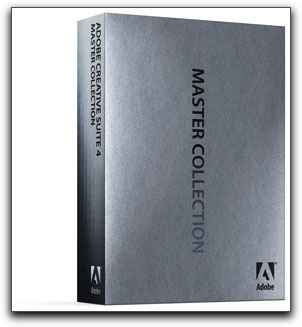
December 1, 2008
www.adobe.com
$2,499
Review by Steve Douglas
It wouldn't surprise me if anyone installing one of the new CS4 Suites from Adobe had different views of the many new features employed within any of the upgraded applications. Depending upon their needs, editors will certainly have varied perspectives. After all, we focus upon the tools we need and use. The Adobe Master Suite is actually a complete collection of all the applications found in each separate suite issued from Adobe. There are other collections such as the Production Premium, The Design Premium and Web Premium, which contain most but not all of the applications, depending upon the Suites' theme and purpose, and for many, these other suites might just be all you need. In addition, all of the applications other than OnLocation CS4 and Encore CS4 can be purchased separately.
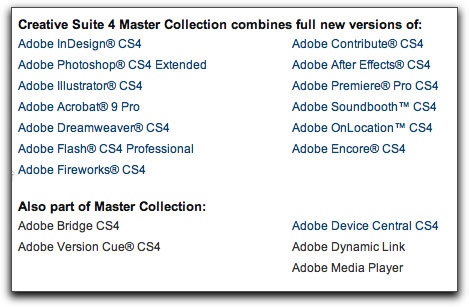
Of course, with each suite there is a different pricing structure so you are able to pinpoint your creative essentials and at the same time limit the amount of money you would be shelling out. For those who are upgrading from Creative Suite 3, a special introductory offer, at a lower price will apply. This offer can be found at www.adobe.com/creativesuite.
While I would have to work through several current and new projects to discover and have need for many of the new features, this review will focus as a general overview of many of them, not necessarily covering each application in full detail or passing judgment. I'd be 80 before I was done with covering all there is, and by then new versions would be out anyway.
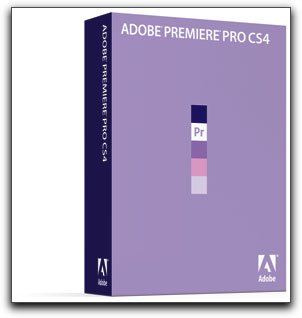
Having returned to the Mac platform since CS3, Adobe's Premier Pro has made significant gains for Intel-based Macs and has brought a considerably greater integration of all its applications much in the same way Apple's Final Cut Studio continues to do. You can now, for instance, bring a Premier Pro sequence into Adobe After Effects and back. Most of the applications now have a common search field similar to Apple's Spotlight, which makes locating files, folders and other media simpler to do. Unlike Final Cut Pro, Adobe Premier Pro will now work natively with AVCHD, HDV, P2. This is a heck of an improvement, especially to the many videographers moving to AVC HD camcorders being released by Panasonic and Sony. It is certainly not a feature that should be overlooked. In addition, Adobe is currently working with Red Cinema to develop a plug in which would enable Premiere Pro and After Effects editors to edit with Red's R3D camera raw files. It is not included in the suite but is something on the, hopefully, near horizon.
At first, startling to me was new Audio-to-Text function, which converts audio to text and allows you to search for and play back different sections based upon the text content. This new feature has tremendous potential to quickly enable the editor to locate relevant portions of the video. Remember that I said "potential" as, at this stage in its development, depending upon the audio itself, it is not gotten to the point of complete accuracy. A second use for this feature is to transcribe the audio to text for use as sub-titles. This would mean using the window found within to locate the exact audio you are seeking and copy the text over to a word processing application and performing a transcribe to text operation using the transcribe button. Using Adobe's Soundbooth application, its audio editor, which comes with most of the varied Adobe suites, can also do this. It was definitely a bit confusing to me at first and, as I said, not always very accurate in locating what I was seeking. However, the feature is a good start which can eventually cut your workflow time significantly as Adobe evolves its functioning for the future.
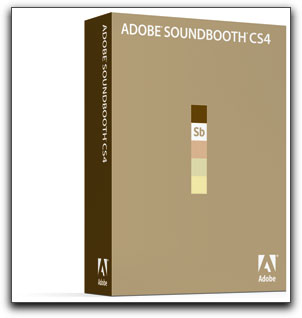
Soundbooth has also evolved. As before it was just a two track audio tool, its' current CS4 version has moved on up to a fully multi track audio application designed to be completely integrated with Premier Pro editors as well as Flash Professional by web developers and designers. Soundbooth CS4 has been developed with task loading in mind. These tasks focus not only upon audio recording, but audio clean up, mixing, and editing supplemented by a good selection of effect filters where in custom adjustments can be made, or the use of presets, divided by task assignments, can be applied.
Included in the new CS4 Master Collection is the new Adobe Media Encoder which functions as a separate application now allowing you to batch render, line up different versions of projects, and clips to be encoded in the format(s) of your choosing.
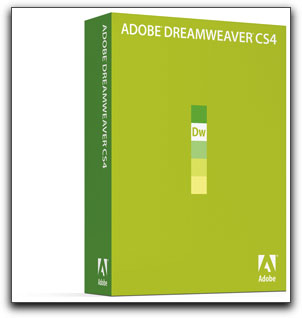
I have never been a real user of Dreamweaver, which has been languishing around forever, but Adobe went to work on it creating improved support for H.264 encoded video in conjunction with improved integration with Flash CS4 and the Adobe Flash Player 10.
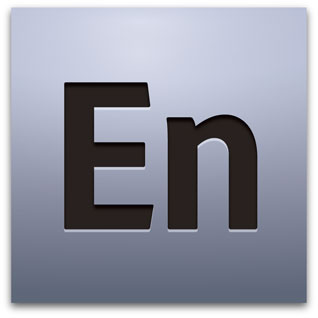
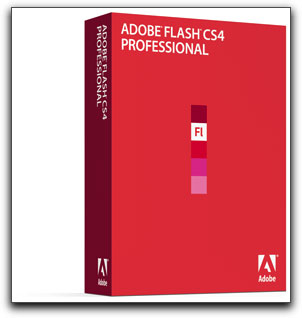
Adobe Encore CS4 works with Flash and also lets you author Flash Projects, standard definition DVDs, and Blu-ray high -def DVDs from a single project file. In the CS3 version, you could author Flash files but they were limited to 640x480 window sizes; no limitations with Encore CS 4. However, for the Mac user, until Apple and Sony get this Blu-ray licensing situation settled (and it doesn't look like it will happen any time soon) the ability of Encore to burn Blu-ray, for those limited to Mac accessibility, is a feature they will not be able to access without 3rd party Blu-ray burners. I don't thus, I have not tested its' Blu-ray burning abilities. Proceed with caution.
I was anxious to see what Adobe had done with one of their premier applications, After Effects. Especially for the After Effects user whose projects become crowded with layer upon layer, the new live search function can be a godsend, enabling you to locate various project elements, effects, properties and more in an instant. Easily compared to the Find Unused media or Find Master Clip in Final Cut Pro, this function allows you to avoid the endless scrolling and opening up layers to locate their contents.
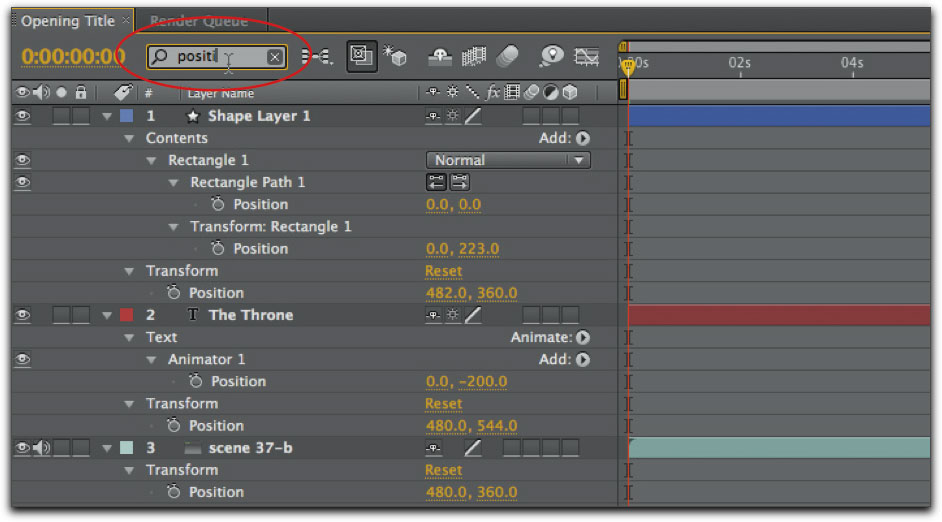
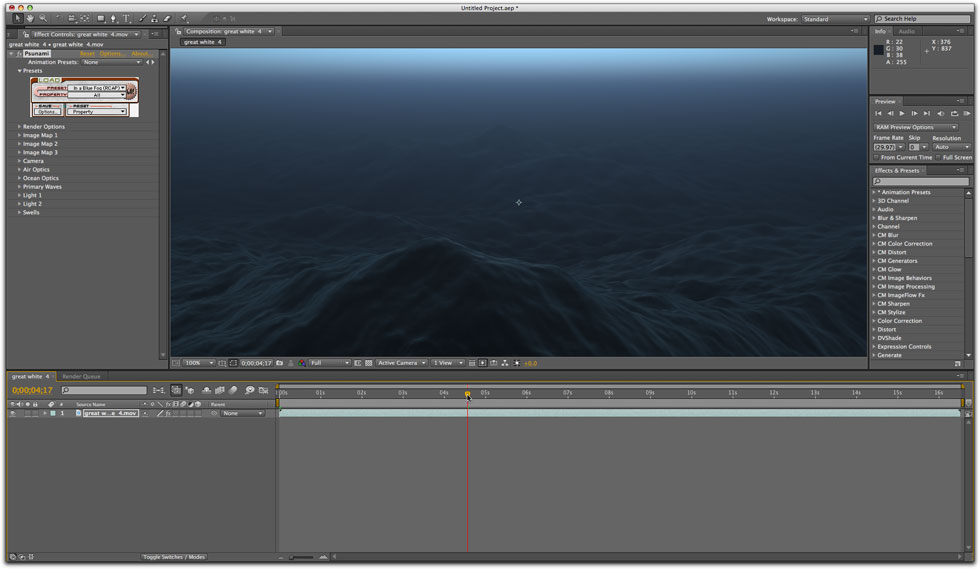
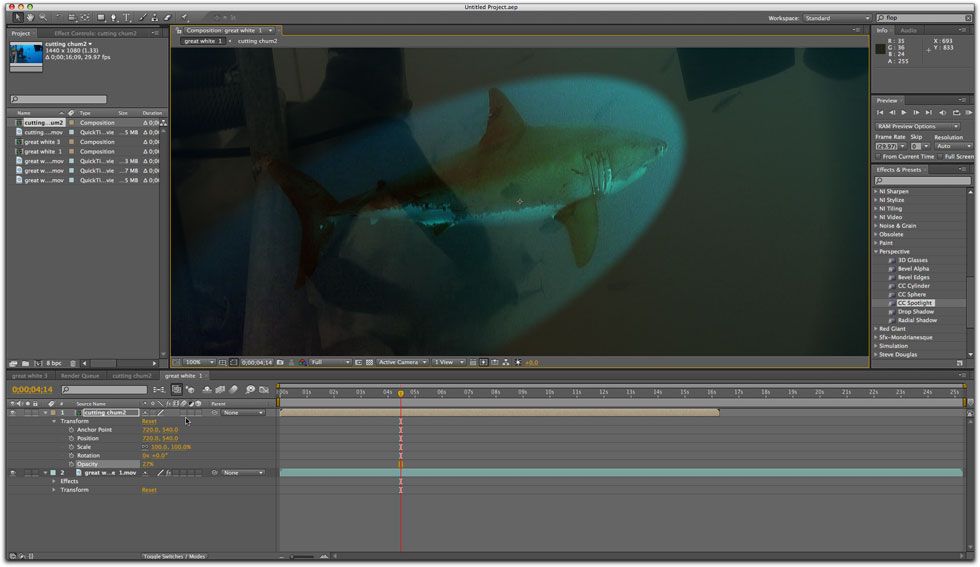
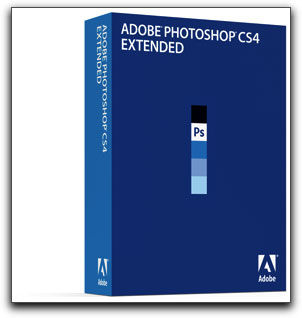
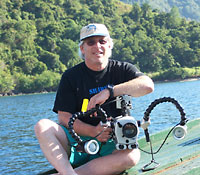 Steve Douglas is a certified Apple Pro for Final Cut Pro 6 and underwater videographer. A winner of the 1999 Pacific Coast Underwater Film Competition, 2003 IVIE competition, 2004 Los Angeles Underwater Photographic competition, and the prestigious 2005 International Beneath the Sea Film Competition, where he also won the Stan Waterman Award for Excellence in Underwater Videography and 'Diver of the Year', Steve was a safety diver on the feature film "The Deep Blue Sea", contributed footage to the Seaworld Park's Atlantis production, and productions for National Geographic and the History channels. Steve is also feature writer for Asian Diver Magazine and is one of the founding organizers of the San Diego UnderSea Film Exhibition. He is available for both private and group seminars for Final Cut Pro and leads both underwater filming expeditions and African safaris with upcoming excursions to Kenya in Aug.09, the Red Sea and Egypt for Nov.2009, Truk Lagoon and Yap in Micronesia for July, 2010. Feel free to contact him if you are interested in joining Steve on any of these exciting trips.
Steve Douglas is a certified Apple Pro for Final Cut Pro 6 and underwater videographer. A winner of the 1999 Pacific Coast Underwater Film Competition, 2003 IVIE competition, 2004 Los Angeles Underwater Photographic competition, and the prestigious 2005 International Beneath the Sea Film Competition, where he also won the Stan Waterman Award for Excellence in Underwater Videography and 'Diver of the Year', Steve was a safety diver on the feature film "The Deep Blue Sea", contributed footage to the Seaworld Park's Atlantis production, and productions for National Geographic and the History channels. Steve is also feature writer for Asian Diver Magazine and is one of the founding organizers of the San Diego UnderSea Film Exhibition. He is available for both private and group seminars for Final Cut Pro and leads both underwater filming expeditions and African safaris with upcoming excursions to Kenya in Aug.09, the Red Sea and Egypt for Nov.2009, Truk Lagoon and Yap in Micronesia for July, 2010. Feel free to contact him if you are interested in joining Steve on any of these exciting trips.